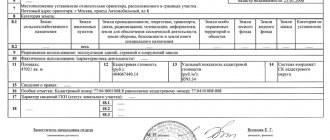Moreover, high-quality instruments for ensuring the fulfillment of obligations are attractive and necessary not only for creditors, but also for the obligated persons themselves - after all, the debtor’s failure is not always associated exclusively with his malicious intent, but also with objective circumstances. A secured obligation practically eliminates in the future unpleasant consequences for the debtor associated with deprivation of rights to family property, prosecution, abuse of creditors, legal expenses, etc.
The classic and, perhaps, the most effective way of such security was and continues to be such today as a pledge.
We can say with confidence that today almost every person has encountered a pledge in one way or another, even from among the economically inactive population or children. For example, a significant number of cars and apartments are currently purchased by individuals using credit funds, which in the vast majority of cases inevitably leads to the collateral of such property.
Let's consider basic information about collateral, its types of collateral and certain aspects of law enforcement practice.
Collateral concept
Pledge is generally understood as a method of securing an obligation, in which the creditor-pledgee, in the event of failure by the debtor to fulfill the obligation secured by the pledge, acquires the right to receive satisfaction of his claims from the pledged property.
At the same time, it should be noted that despite the apparent simplicity of this concept, in practice and in civil doctrine there are a lot of ambiguous interpretations and unresolved contradictions, which makes a pledge not such a simple and unambiguous way to secure obligations as it might seem at first glance. Some of these problems will be covered further, but the topic of collateral certainly deserves a much more in-depth study, which is impossible within the scope of this article.
Pledge legal relations in Russia are regulated by the Civil Code of the Russian Federation (Civil Code of the Russian Federation), Law of the Russian Federation of May 29, 1992 No. 2872-1 “On Pledge” (valid in the part that does not contradict the Civil Code of the Russian Federation), Federal Law of July 16, 1998 No. 102 -FZ “On mortgage (mortgage of real estate)”, the Merchant Shipping Code of the Russian Federation (KTM RF) in terms of maritime pledge, and in relation to the pledge of a bill of exchange – Resolution of the Central Executive Committee of the USSR and the Council of People's Commissars of the USSR dated August 7, 1937 No. 104/1341 “On the introduction of effect of the Regulations on bills of exchange and promissory notes."
In addition, the legal positions on the topic of the article, formed in the decisions of the Plenums of the Supreme Court of the Russian Federation and the Supreme Arbitration Court of the Russian Federation, are also extremely important. We will also highlight some of them.
Answers to readers' questions
What are the requirements for a secured loan agreement?
The document is subject to a standard set of requirements. The main two of them are written form, as well as the mandatory indication of all the necessary details and terms of the transaction.
What are the advantages of secured loans?
The benefits of this method of financing are obvious to both parties. The lender reduces its own risks, as it receives liquid and valuable collateral. The borrower has the opportunity to receive loans on significantly more favorable terms - at a low interest rate, for a larger amount and for a period.
What types of property are most often used to secure the borrower's financial obligations?
The most popular collateral options are real estate and vehicles. This is explained by the serious cost and liquidity of these types of property.
Subject of collateral
So, as stated above, the essence of a pledge comes down to the provision by the pledgor to the pledgee of certain rights to this or that property in order to ensure the fulfillment of a specific obligation, implying the opportunity for the pledgee to obtain satisfaction of his claim if the secured obligation is not fulfilled.
In other words, property (including things and property rights) must be accepted as collateral, which the mortgagee-creditor can sell and, from the proceeds, reduce or completely extinguish its claims against the debtor.
Property withdrawn from circulation, claims inextricably linked with the identity of the creditor, in particular claims for alimony, compensation for harm caused to life or health, and other rights, the assignment of which to another person is prohibited by law, cannot be the subject of a pledge.
The possibility of transferring money as collateral remains a controversial issue. Traditionally, judicial practice (for example, Resolution of the Presidium of the Supreme Arbitration Court of the Russian Federation dated July 2, 1996 No. 7965/95 and information letter of the Presidium of the Supreme Arbitration Court of the Russian Federation dated January 15, 1998 No. 26) and theoretical civil law answer this question negatively, bearing in mind that the subject The collateral must have sales potential in the manner prescribed by law, but money in the traditional sense does not have such potential.
...despite the apparent simplicity of the concept of “pledge,” in practice and in civil doctrine there are a lot of ambiguous interpretations and unresolved contradictions...
At the same time, there are also opposing opinions based on a literal interpretation of the law, in which such a prohibition is not directly established. In addition, recent changes to the Federal Law “On Pledge”, introduced by Federal Law No. 405-FZ of December 6, 2011, provide for the opportunity for legal entities and individual entrepreneurs to include in an agreement on the pledge of movable property, which provides for an extrajudicial procedure for foreclosure on the pledged movable property. property concluded to secure obligations related to business activities, as a way of selling the subject of pledge; the pledgee retains the subject of pledge for himself.
That is, based on the literal interpretation of this and other rules on the sale of the subject of pledge in their totality and interrelation, it follows that the regulatory framework underlying the above position of the higher courts has undergone some changes and, perhaps, will soon be changed.
In this context, it should be noted that, contrary to the above contradictions, some sectoral legislation (for example, customs legislation (deposit of funds on account of customs duties) or legislation on public procurement (a pledge of seriousness of intent or deposit of a tenderer) quite actively uses constructions that provide for de- actually cash collateral.
Every entrepreneur who has at least once rented premises for his business knows about cash deposits - the rental market for commercial (and, more recently, residential) real estate has long formed a custom, by virtue of which, when concluding a lease agreement for premises, the tenant makes a deposit in the amount of at least a month payment, which is counted towards the last month of rent, or is withheld by the landlord in the event of a violation by the tenant of the terms of the contract.
Thus, the issue of the possibility of pledging funds remains controversial and requires resolution at the legislative or higher judicial levels.
Tax accounting
Value added tax (VAT)
Receiving property as collateral does not entail any consequences for the calculation and payment of VAT, since the right of ownership, according to clause 2 of Art. 335 of the Civil Code of the Russian Federation, the subject of the pledge is retained by the pledgor.
Corporate income tax
For the purpose of calculating income tax, the value of property received by an organization as collateral, in accordance with paragraphs.
2 p. 1 art. 251 of the Tax Code of the Russian Federation, is not recognized as income. Example
An organization - a pledge holder (lender) provided a loan in the amount of 5 million rubles to an organization - a pledge holder (borrower). for the period from May 1 to August 31, 2021, secured by property.
Interest for using the loan is calculated based on 1% per month and is paid monthly.
The subject of the pledge is materials worth 6 million rubles, which are transferred to the pledgee.
In the pledge agreement, these inventories are valued at 5.5 million rubles.
On August 31, 2021, the loan was repaid.
On the same day, the pledge was terminated due to the borrower fulfilling its obligations under the loan agreement.
The following entries must be made in the accounting records of the organization that is the pledgor (borrower):
| Contents of operations | Debit | Credit | Amount, rub. | Primary document |
| May 1, 2021: | ||||
| Loan received according to agreement | 51 “Current accounts” | 66 “Settlements for short-term loans and borrowings” | 5 000 000 | Loan agreement, bank account statement |
| Materials pledged | 10 “Materials”, subaccount “Materials pledged” | 10 "Materials" | 6 000 000 | Pledge agreement |
| The transfer of materials as collateral to ensure the fulfillment of obligations under the loan agreement is reflected | 009 “Securities for obligations and payments issued” | 5 500 000 | Pledge agreement | |
| May 31 and at the end of each month until August 31, 2021: | ||||
| Interest accrued for using the loan (RUB 5,000,000 x 1%) | 91 “Other income and expenses”, subaccount 2 “Other expenses” | 66 “Settlements on short-term loans and borrowings”, subaccount “Interest on a loan received” | 50 000 | Loan agreement, accounting statement-calculation |
| Interest paid on loan | 66 “Settlements on short-term loans and borrowings”, subaccount “Interest on a loan received” | 51 “Current accounts” | 50 000 | Bank statement on current account, Loan agreement |
| August 31, 2021: | ||||
| Loan repayment reflected | 66 “Settlements for short-term loans and borrowings” | 51 “Current accounts” | 5 000 000 | Bank statement on current account, Loan agreement |
| The cost of materials returned by the pledge holder is taken into account | 10 "Materials" | 10 “Materials”, subaccount “Materials pledged” | 6 000 000 | Pledge agreement |
| The amount of the repaid obligation under the pledge agreement has been written off. | 009 “Securities for obligations and payments issued” | 5 500 000 | Pledge agreement | |
The following entries must be made in the accounting records of the organization that is the mortgagee (lender):
| Contents of operations | Debit | Credit | Amount, rub. | Primary document |
| May 1, 2021: | ||||
| Funds provided on the basis of a loan agreement | 58 “Financial investments”, subaccount 3 “Loans provided” | 51 “Current accounts” | 5 000 000 | Loan agreement, bank account statement |
| The cost of materials received from the debtor to secure the obligation under the loan agreement is taken into account on the balance sheet. | 008 “Securities for obligations and payments received” | 5 500 000 | Pledge agreement | |
| May 31 and at the end of each month until August 31, 2021: | ||||
| Interest accrued on the loan provided for the month | 58 “Financial investments”, subaccount 3 “Loans provided”, subaccount “Interest on the loan provided” | 91 “Other income and expenses”, subaccount 1 “Other income” | 50 000 | Loan agreement, accounting statement-calculation |
| Interest received on the loan for the month. | 51 “Current accounts” | 58 “Financial investments”, subaccount 3 “Loans provided”, subaccount “Interest on the loan provided” | 50 000 | Bank statement on current account, Loan agreement |
| August 31, 2021: | ||||
| The loan amount was returned by the debtor | 51 “Current accounts” | 58 “Financial investments”, subaccount 3 “Loans provided” | 5 000 000 | Bank statement on current account, Loan agreement |
| The amount of collateral is written off from off-balance sheet accounting. | 008 “Securities for obligations and payments received” | 5 500 000 | Pledge agreement | |
The emergence of collateral
As a general rule, a pledge arises by virtue of an agreement between a creditor and a debtor, or a creditor and a third party who is ready to provide their property to secure the fulfillment of an obligation by the debtor.
A pledge is a typical example of an accessory obligation, that is, an obligation that arises in inextricable connection with the main obligation - the debt for which the property is pledged.
This means, for example, that the termination of the main obligation automatically entails the termination of the collateral legal relationship.
In addition, it should be noted the difference in determining the moment of emergence of rights to a pledge depending on the type of pledge. Thus, as a general rule, the right of pledge arises from the moment of concluding a pledge agreement, and in relation to the pledge of property that is to be transferred to the pledgee, from the moment of transfer of this property, unless otherwise provided by the pledge agreement. And when pledging goods in circulation, the pledge arises and terminates depending on the ownership of the goods by the pledgor.
In the pledge agreement, according to Art. 339 of the Civil Code of the Russian Federation, the subject of the pledge and its valuation, the essence, size and period of fulfillment of the obligation secured by the pledge must be indicated. It must also contain an indication of which party holds the pledged property.
The issue of assessing the subject of pledge when concluding an agreement is in many ways of a very formal nature, given that the sale of the subject of pledge is largely regulated and, in any case, the issue of assessing property sold at auction will be raised more than once by the bailiff and the person who will be entrusted with organizing the auction.
...the possibility of transferring money as collateral remains a debatable issue. Traditionally, judicial practice and theoretical civil law answer this question in the negative...
At the same time, the absence of an assessment of the collateral will entail the recognition of the contract as not concluded, so you should not forget about this.
The pledge agreement must be concluded in writing.
The parties may provide in the pledge agreement conditions on the procedure for the sale of the pledged property by a court decision and (or) on the possibility of foreclosure on the pledged property out of court.
An agreement on the pledge of movable property or rights to property to secure obligations under the agreement, which must be notarized, is subject to notarization. For example, a pledge agreement for a share in the authorized capital of a limited liability company is notarized. A mortgage agreement is concluded by drawing up one document signed by the parties and must be registered in the manner established for the registration of transactions with the relevant property. An agreement giving rise to a mortgage by force of law and containing a provision for foreclosure of the mortgaged property out of court must be concluded by drawing up one document signed by the parties.
At the same time, in addition to the contract, a pledge may arise by force of law. So, for example, unless otherwise provided by the purchase and sale agreement, from the moment the goods are transferred to the buyer and until payment, goods sold with deferred payment are recognized as being pledged to the seller to ensure the buyer fulfills his obligation to pay for the goods. A mortgage mechanism is also provided by force of law (pledge of real estate acquired with the use of credit funds); in addition, when transferring a plot of land or other real estate for payment of rent, the recipient of the rent, as security for the obligation of the rent payer, acquires the right of pledge on this property. True, in practice, courts do not recognize goods as pledged if the buyer has paid more than 50% of its value.
Registration of the agreement
After filling out the property data sheet, the parties need to go through the procedure of registering the transaction.
To do this, it is recommended to perform the following steps: Stage 1: Preparation of remote sensing
The DZ is filled out, as a rule, in 3 copies - one for each participant in the transaction and one copy for Rosreestr.
Stage 2: Preparation of documents for registration of property rights
At this stage, documentation is collected for sending to Rosreestr. This includes:
- A photocopy of the applicant's passport with presentation of the original.
- DZ issued.
- Title documents for real estate pledged.
- Receipt for transfer of state duty.
- Permission of the applicant's spouse (if necessary).
- Consent of the trustee department (if necessary).
Stage 3: Contacting Rosreestr
To register a property plot, you will need to submit a request along with the prepared documents to Rosreestr at the location of the real estate.
Note. State Registration must be completed within 7 working days.
State duty
From January 1, 2018, the amount of state duty for registering a real estate pledge is set in the following amounts:
- If a mortgage agreement was concluded by legal entities after July 1, 2014, and the collateral is one piece of real estate, then the state duty is 15,000 rubles (7,500 for each legal entity).
- If the mortgage agreement is concluded between an individual and a legal entity. person after July 1, 2014, and the collateral is one piece of real estate, then the state duty is 8,000 rubles (500 for an individual, 7,500 for a legal entity).
Contracts to change the terms of a registered mortgage agreement, presented to the state. registration after July 1, 2014, subject to state registration. registration. The state duty is calculated according to clause. 28 clause 1 art. 333.33 Tax Code of the Russian Federation:
- For individuals - 200 rubles.
- For legal entities persons - 600 rubles.
0 0 vote
Article rating
Types of collateral
Based on the various conditions established by the parties in the pledge agreement, or other circumstances accompanying the pledge legal relationship, the following types of pledge can be distinguished:
Collateral and mortgage
Typically, the pledged item remains in the possession of the pledgor without any changes in the rules for its use (unless additional requirements arise for insuring the property pledged, ensuring its safety and informing the pledgee about the fate of such property).
The legislator separately identifies a situation in which, by agreement of the pledgee with the pledgor, the subject of the pledge can be left with the pledgor under the lock and seal of the pledgee, and an individually defined thing can be left with the pledgor with the imposition of signs indicating the pledge - the so-called firm pledge.
It happens that the parties agree to transfer the collateral directly to the pledgor (mortgage), which, of course, to a certain extent makes it easier for the creditor to foreclose on such property in the future, although it imposes additional obligations on the latter to ensure its safety.
It is noteworthy that in this case, by agreement of the parties, the pledgee may be given the right to use the pledged item transferred to him, regularly submitting a report on use to the pledgor. Under the agreement, the pledgee may be obligated to extract fruits and income from the pledged property in order to repay the main obligation or in the interests of the pledgor.
Initial and subsequent pledge
The mortgagor, who is left with the pledged property “in hand,” can, of course, try to pledge it again, especially since in the vast majority of cases when it comes to movable property, there are usually no certificates of pledge available to a wide range of people ( which is one of the most serious problems of our time).
The pledge of already pledged property is called subsequent and, according to current legislation, the claims of the subsequent pledgee are satisfied from the value of this property after the claims of the previous pledgeholders.
In this case, a subsequent pledge is allowed if it is not prohibited by previous pledge agreements.
The pledgor is obliged to inform each subsequent pledgee of information about all existing pledges of this property and is responsible for losses caused to pledgees by failure to fulfill this obligation.
In the event of foreclosure on the pledged property on claims secured by a subsequent pledge, early fulfillment of the obligation secured by the pledge may be simultaneously demanded and foreclosure on this property may also be made on claims that are secured by a previous pledge and the deadline for filing for foreclosure has not yet arrived. If the pledgee under the previous pledge agreement has not exercised this right, the property that has been foreclosed on claims secured by the subsequent pledge passes to its acquirer as encumbered by the previous pledge.
Thus, a certain priority of the interests and rights of the original mortgagee is established. At the same time, the lack of unified information databases on pledged movable property creates significant risks in the registration of collateral legal relations, which citizens and microfinance organizations now regularly face when concluding collateral agreements in relation to, for example, cars.
Mortgage
Mortgages stand apart when it comes to regulating collateral. And this is not a loan secured by an apartment, as this term has become traditionally understood, but rather a pledge of real estate. Mortgages have become widely known thanks to financing programs for the purchase of residential real estate, which provide for the automatic transfer of such property as collateral to the appropriate credit institution.
Legal relations regarding mortgages are regulated by Federal Law No. 102-FZ of July 16, 1998 “On Mortgage (Pledge of Real Estate),” which establishes many nuances that distinguish a mortgage of real estate from other pledges.
In particular, it provides for a mortgage by force of law (automatic pledge when purchasing real estate using credit funds), state registration of a mortgage (issuance of certificates of registration of ownership of real estate with a note about the encumbrance in the form of a mortgage), the use of a mortgage as a security, and a number others.
At the moment, a mortgage seems to be perhaps one of the most transparent and safe types of collateral.
Pledge of goods in circulation
One of the most interesting types of pledges, which came to us from ancient times, was then known as the “shop pledge.”
A pledge of goods in circulation is recognized as a pledge of goods with their retention by the pledgor and with the provision to the pledgor of the right to change the composition and natural form of the pledged property (inventory, raw materials, materials, semi-finished products, finished products, etc.) provided that their total value is not becomes less than specified in the pledge agreement.
Thus, the pledgor manages to attract borrowed funds by securing the interests of the creditor with the pledge of goods, which the pledgor at the same time has the right to sell and purchase without stopping the work of his enterprise.
The peculiarity of this type of pledge is that it is directly related to the moment of emergence or termination of the pledgee’s ownership of the relevant goods.
Pledge of things in a pawnshop
A previously quite popular type of collateral that many Soviet citizens encountered was the opportunity to receive a certain amount of cash in exchange for a collateral of some value. In the future, the debt could be repaid and the value could be returned.
Otherwise, the pawnshop sold the pledged value. That is, he quite quickly, out of court, foreclosed on the collateral.
Nowadays, the acceptance from citizens of movable property intended for personal consumption as security for short-term loans can also be carried out as a business activity by specialized organizations - pawnshops, whose activities are regulated by Federal Law of July 19, 2007 No. 196-FZ “On Pawnshops” .
Loan agreements and, accordingly, pledge agreements are formalized by the pawnshop issuing a pledge ticket. The pawned items are transferred to the pawnshop.
The pawnshop is obliged to insure in favor of the pledgor at its own expense the things accepted as collateral in the full amount of their valuation, established in accordance with the prices for things of this kind and quality, usually established in trade at the time of their acceptance as collateral.
The pawnshop does not have the right to use and dispose of the pledged items.
In case of failure to repay the loan amount secured by the pledge of things in a pawnshop within the established period, the pawnshop has the right to sell this property after the expiration of a grace period of one month.
As a general rule, foreclosure on pledged property is carried out by pawnshops with a notary's writ of execution, however, an agreement between the pawnshop and the borrower may also provide for the possibility of this operation without such an inscription.
The pawnshop sells the pledged property independently or by organizing a public auction. If the cost of an item exceeds thirty thousand rubles, sale is possible only at public auction.
After this, the pawnshop’s claims against the pledgor (debtor) are repaid, even if the amount received from the sale of the pledged property is insufficient to fully satisfy them.
Accounting
The pledged property of the mortgagor remains his property and continues to be accounted for on his balance sheet as an asset.
At the same time, in the analytical accounting organized for the synthetic account on which the corresponding type of property is listed, the information that this property is pledged should be reflected.
Guarantees to ensure the fulfillment of obligations are taken into account by the pledgor in the debit of off-balance sheet account 009 “Securities for obligations and payments issued” (Instructions for the application of the Chart of Accounts for accounting financial and economic activities of organizations, approved by Order of the Ministry of Finance of Russia dated October 31, 2000 N 94n).
The value of the property that is the subject of the pledge is reflected in account 009 “Securities for obligations and payments issued” in the amount at which it was valued by the parties to the agreement.
If the pledged item is transferred to the pledgee, then the change in the location of the pledged property is reflected in the inventory cards of this property and (or) in the analytical accounting organized for the synthetic account on which the corresponding type of property is listed. Entries in inventory cards and (or) in analytical accounting are made on the basis of the Acceptance and Transfer Certificate of the subject of pledge (movable property).
At the same time, in accounting, the transfer of property in the form of collateral is not recognized as an expense of the organization, since there is no reduction in economic benefits (clause 2 of PBU 10/99).
When the obligation is repaid, the amount of the security is debited from account 009 “Securities for obligations and payments issued” (Instructions for the application of the Chart of Accounts for accounting financial and economic activities of organizations, approved by Order of the Ministry of Finance of Russia dated October 31, 2000 N 94n).
When the pledge is terminated as a result of the pledgor's fulfillment of obligations under the main agreement, internal accounting entries are made in the subaccounts of the relevant accounts, which are the opposite of those recorded when the property was pledged.
In fact, sub-accounts opened for maintaining separate records of property pledged are closed.
Termination of bail
The pledge is terminated:
- with the termination of the obligation secured by the pledge;
- at the request of the pledgor if there are grounds related to the pledgee’s improper care for the safety of the thing;
- in the event of the destruction of the pledged item or termination of the pledged right, if the pledgor did not exercise the right to restore or replace the pledged item;
- in the event of the realization (sale) of the pledged property in order to satisfy the requirements of the pledgee in the manner prescribed by law, as well as in the event that its sale turns out to be impossible.
Accounting
The pledgor's accounting depends on whether the pledgor reimburses the costs of insuring the collateral.
If the pledgor reimburses insurance costs, the following entries must be made in the pledgor’s accounting records:
Debit 76-1 “Settlements with other debtors and creditors” Credit 51
The insurance premium has been paid;
Debit 76-5 “Settlements with the pledgor” Credit 76-1 “Settlements with other debtors and creditors”
The costs of insuring the collateral are included in settlements with the pledgor;
Debit 51 Credit 76-5 “Settlements with the pledgor”
Reimbursement of insurance costs has been received from the mortgagor.
If the pledgor does not reimburse insurance costs, then the following entries must be made in the pledgor’s accounting records:
Debit 76-1 “Settlements with other debtors and creditors” Credit 51
The insurance premium has been paid;
Debit 91-2 Credit 76-1 “Settlements with other debtors and creditors”
The insurance premium is included in other expenses;
Debit 99 Credit 68/PNO
PNO reflected (insurance costs x 20%).
Example
According to the terms of the pledge agreement, insurance of the pledged property is carried out by the pledgee.
In this regard, the mortgagee organization entered into an insurance agreement and paid a one-time insurance premium in the amount of 90,000 rubles.
In the accounting of the pledgee organization, the costs of insuring the collateral received to secure the fulfillment of obligations should be reflected as follows:
| Contents of operations | Debit | Credit | Amount, rub. | Primary document |
| Insurance premium paid | 76-1 | 51 | 90 000 | Bank account statement |
| Insurance costs are recognized as other expenses | 91-2 | 76-1 | 90 000 | Insurance policy, Accounting certificate |
| PNO reflected (90,000x 20%) | 99 | 68/PNO | 18 000 | Accounting certificate-calculation |
Foreclosure of mortgaged property
As a general rule, foreclosure on pledged property is carried out by a court decision, unless, however, an agreement between the pledgor and the pledgee provides for foreclosure on the pledged property out of court.
At the same time, the legislator indicates that satisfaction of the pledgee's claim at the expense of the pledged property out of court is permitted on the basis of an agreement between the pledgor and the pledgee.
An agreement between the pledgor and the pledgee on the extrajudicial procedure for foreclosure on the pledged property can be concluded at any time - both simultaneously with the conclusion of the pledge agreement and after its conclusion.
Execution on the subject of pledge can only be made by court decision in cases where:
- the subject of the pledge is a residential premises owned by an individual;
- the subject of the pledge is property that has significant historical, artistic or other cultural value for society;
- the mortgagor - an individual is recognized as missing in accordance with the established procedure;
- the pledged property is the subject of previous and subsequent pledges, in which different procedures for foreclosure on the pledged property or different methods of selling the pledged property are applied;
- the property is pledged to secure the fulfillment of various obligations to several co-mortgagors.
A pledge agreement containing a provision for foreclosure on the pledged property out of court or a provision for the procedure for the sale of the pledged property on the basis of a court decision may provide for a method or several methods for the sale of the pledged property, which the pledgee has the right to use at his own discretion, including in a certain sequence or depending on any other conditions.
If a pledge agreement containing a condition for foreclosure on the pledged property extrajudicially is certified by a notary, in the event of non-fulfillment or improper fulfillment by the debtor of the obligation secured by the pledge, foreclosure on the subject of pledge is allowed according to the writ of execution of a notary without going to court in the manner established by the legislation on notary and legislation of the Russian Federation on enforcement proceedings.
In practice, however, the mechanism for extrajudicial foreclosure of pledged property works extremely hard, and the author of the article somehow came across a notary’s categorical refusal to include such a provision in the agreement for pledging a share in the authorized capital of a limited liability company.
Thus, today it can be stated that in the vast majority of cases, the pledgee will have to defend his interests in court and foreclose on the pledged property through the traditional procedures established by law related to the sale of the pledged item through auctions, etc.
Protection of the rights of the mortgagee
As already mentioned, a pledge is a kind of real right (Some civilists, however, classify a pledge not as a real right, but as an obligation, citing the structural placement of the corresponding chapter in the Civil Code, as well as the accessory nature of the pledge obligation - another debatable point about pledge). The legislator provides the mortgagee with a significant set of tools to protect such a right.
Thus, the pledgee, who had or should have had the pledged property, has the right to reclaim it from someone else’s illegal possession, including from the possession of the pledgor.
In cases where, under the terms of the agreement, the pledgee is granted the right to use the pledged property transferred to him, he may demand from other persons, including the pledgor, to eliminate any violations of his rights, even if these violations were not associated with deprivation of possession.
A characteristic principle is the preservation of the pledge when the right to the pledged property is transferred to another person.
In the event of transfer of ownership of the pledged property or the right of economic management or the right of operational management of it from the pledgor to another person as a result of paid or gratuitous alienation of this property (except for cases of sale of this property in order to satisfy the requirements of the pledgee in the manner prescribed by law) or in in accordance with the procedure of universal legal succession, the right of pledge remains in force.
The legal successor of the pledgor takes the place of the pledgor and bears all the obligations of the pledgor, unless otherwise established by agreement with the pledgee.
If the property of the pledgor, which is the subject of the pledge, has been transferred by succession to several persons, each of the legal successors (purchasers of the property) bears the consequences arising from the pledge of failure to fulfill the obligation secured by the pledge in proportion to the part of the specified property transferred to him. However, if the subject of the pledge is indivisible or for other reasons remains in the common property of the legal successors, they become joint pledgors.
...the issue of assessing the collateral when concluding an agreement is largely of a very formal nature. At the same time, the absence of an assessment of the collateral will entail the recognition of the contract as not concluded, so you should not forget about this...
It would seem that everything is clear, but practice, as always, has made its own adjustments.
In the Resolution of the Plenum of the Supreme Arbitration Court of the Russian Federation dated February 17, 2011 No. 10 “On some issues of application of the legislation on pledge”, the Supreme Arbitration Court of the Russian Federation stated the following:
“Based on the general principles and meaning of civil legislation (analogy of law) and the requirements of good faith, reasonableness and justice (clause 2 of Article 6 of the Civil Code of the Russian Federation), foreclosure cannot be made on pledged movable property acquired for compensation from the pledgor by a person who did not know and did not should have known that the property he was purchasing was the subject of a pledge. In this case, the courts must evaluate the circumstances of the acquisition of the pledged property, based on which the buyer should have assumed that he was acquiring the property that was pledged. In particular, the courts must establish whether the purchaser was given the original copy of the document evidencing the seller’s right to the property being sold (for example, a vehicle passport) or a duplicate thereof; whether there were signs of a pledge on the pledged property at the time of its transfer to the acquirer.
If the court establishes that the subject of the pledge, in accordance with the pledge agreement, was in the possession of the pledgee, but was removed from possession against his will, the claim for foreclosure on the pledged property shall be satisfied regardless of the fact that the buyer did not know and should not have known that the property he was purchasing was pledged.”
This position shocked the legal community and gave hope to many of our fellow citizens who were victims of fraud with credit (and, accordingly, mortgaged) cars. After all, for the most part, they were absolutely bona fide purchasers who bought cars with a full package of original documents (many banks no longer hold the title of cars for a long time), and there is no unified database on car pledges yet.
However, the Supreme Court of the Russian Federation, with its ruling of July 12, 2011 No. 74-B11-4, instantly brought everyone back to earth.
Thus, as the court noted, regardless of the transfer of ownership of a thing to third parties, the pledgee does not lose the right to foreclose on it for debt, and the rights of a third party can be protected within the framework of other relations.
At the same time, the Civil Code of the Russian Federation does not provide for such a basis for termination of a pledge as the acquisition of pledged property by a person who did not know about its encumberment with a pledge.
The transfer of ownership in this case does not terminate the pledge. The legal successor of the pledgor takes his place.
There are no exceptions in the law that allow the person who acquired such property to be released from the obligations of the mortgagor transferred to him due to the fact that when concluding the purchase and sale agreement he was not aware of the encumbrances imposed.
Thus, regardless of the transfer of ownership of a thing to third parties, the pledgee does not lose the right to demand foreclosure of the debt.
The rights of a third party in such a situation can be protected within the framework of other relations - between him and the former owner (mortgagor) by compensating such seller for losses.
Undoubtedly, this is a decision on a specific case, which may not be used by lower courts in other cases, but in practice, courts of first instance always rely on the position of higher courts.
This contradiction in the position of the highest (although now united) courts has revealed another systemic problem in the assessment and interpretation of the rules of law on pledge, which confirms the thesis stated at the beginning of the article about the ambiguity and complexity of this type of obligation, despite its clarity and apparent simplicity.
Alexey Trofimov
, managing partner of legal, for the magazine "Consultant"
Correct contract
An agreement is a prerequisite for the correct flow of a transaction. A properly drafted contract will protect you in case something goes wrong. To professionally draw up an agreement, you need a “Correct Agreement” berator. Find out more >>









